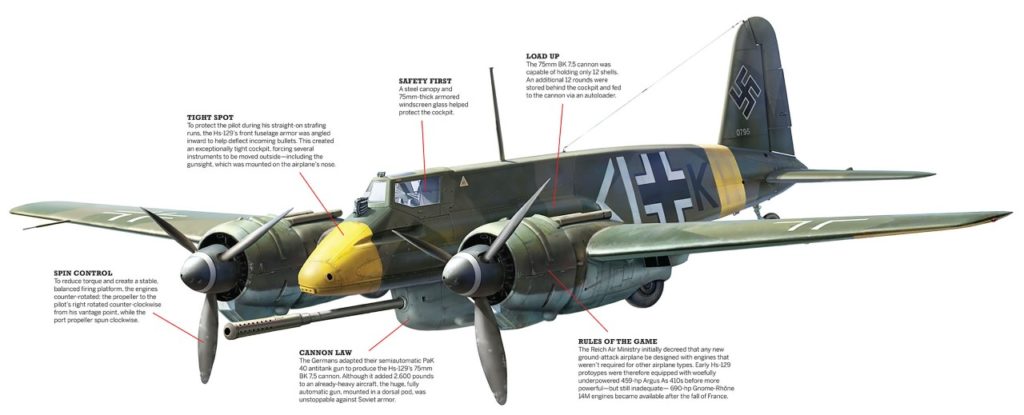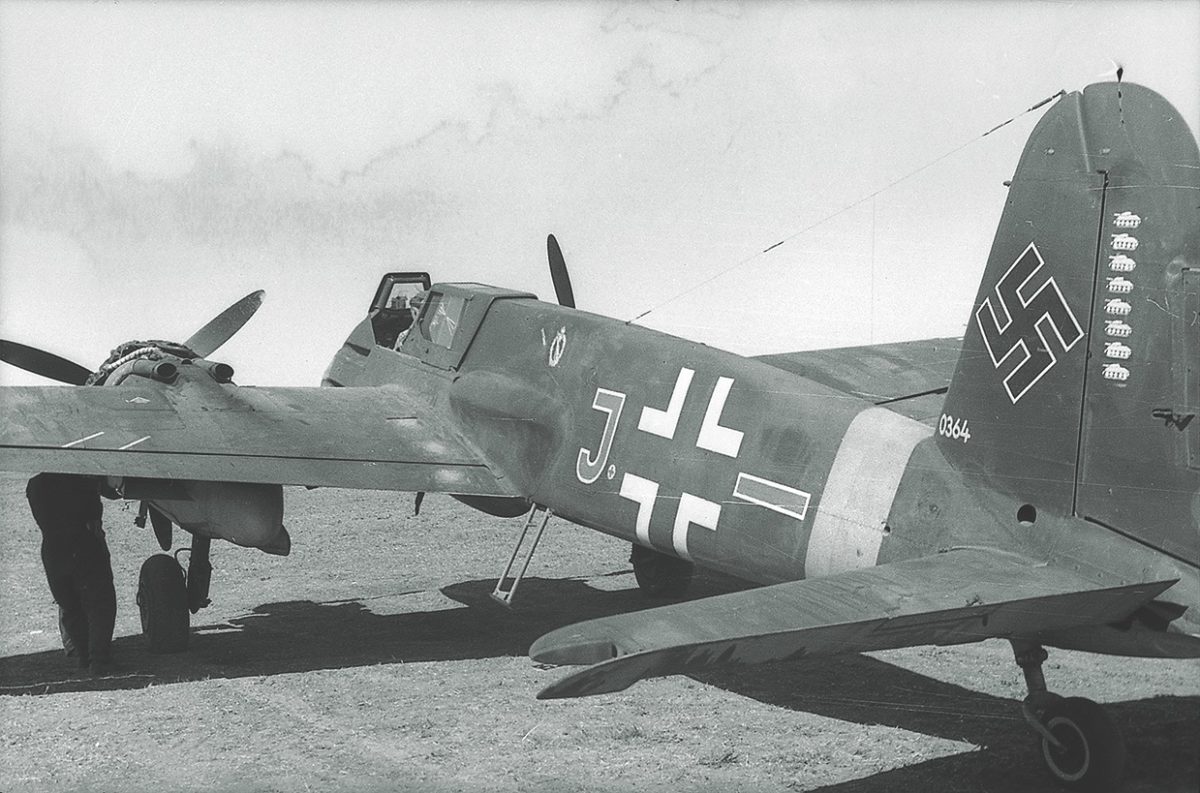IN THE LATE 1930s, Germany—taking lessons from its participation in the Spanish Civil War—began developing a ground-attack airplane to take on well-defended troops and armor, bucking the post-WWI prevailing wisdom that low-flying attack aircraft were especially susceptible to enemy machine gun and rifle fire.
Heavily armored around the nose and cockpit, the Henschel Hs-129 made its first appearance in 1942 and was deployed to the Eastern Front. The airplane proved itself particularly effective at destroying Soviet tanks, even though its extensive armor and armament made the Hs-129 heavy for its engines, producing a slow and clumsy ride.

As the war progressed, and the Soviets applied heavier armor to its tanks, the Hs- 129’s firepower was upped, culminating in the B-3 model of June 1944 (below), which featured the massive 75mm BK 7,5 cannon, World War II’s most powerful forward-firing aircraft weapon. The cannon could knock out any tank then in production, but this was a case of too little, too late—only 25 B-3s were delivered to the field, and they were unable to swing the balance of power toward the faltering German war machine. The rest, as they say, is history.
This article appeared in the February 2022 issue of WWII magazine.





